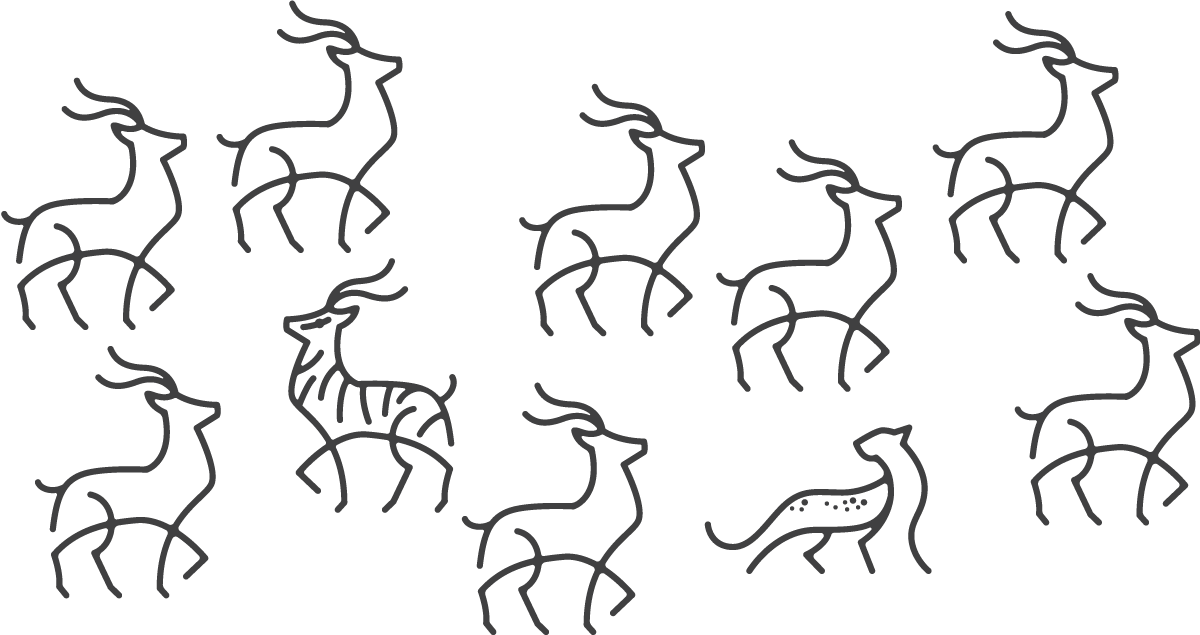Our human instinct tells us that there is safety in numbers. This goes back to the whole caveman and tribes thing. Fitting in with a larger tribe and not being a “lone wolf” allows for greater protection, safety, food, mating, etc… You get the point.
Since this knowledge is embedded in our subconscious, it is a natural response that happens involuntarily. Like a knee-jerk reaction when you pull your hand from something hot. Great for surviving in nature, but unfortunately, this instinct can have many business owners applying it to their businesses. The irony is that this instinct actually has the opposite effect on a business than what it does for humans.
When businesses feel the need to choose the “safety” of numbers by doing exactly the same as the rest of their industry is doing they simply blur with their competition and join the herd like white noise. Sure, this is great for avoiding tigers who want to devour you, but it’s just as effective at avoiding customers who want to pay you.

Most industries with small businesses seem to act like a school of fish. Joining together to create one giant mass of service. The logic of this is to avoid detection and confuse the threat. As a business, avoidance and confusion are two things you probably don’t want to be associated with…
The survival of a business is dependent on standing out. Hence why you spend so much on advertising and marketing. Even if that is the case, and you have properly allocated funds for these two tactics. If you are still part of that school of fish, you’re just slowly killing your business.
The appearance of safety that businesses feel when doing “what everyone else does” is a fallacy that leads to death. It’s silly to think how this is what everyone does as they stifle their own growth and success. This depreciates the value for the customer and makes their life a nightmare trying to choose which vendor to go with. Like a predator chasing a school of fish, it eventually gets exhausted from trying to pick which fish to chase. As it gives up, it goes after a better prey that is out on its own. The coveted potential customer you are trying to win over will seek out a larger business. One that is not dependent on the group of small businesses (all saying and doing the same thing) to survive.
It’s not about just doing whatever the opposite in efforts to stand out. It’s about being strategic and deliberate in the ways you stand out. How those areas bring more value and appeal. A brand helps a business stand out from the crowd in the ways that matter and bring more value to both the customer and the business. In a way, you do want to be the easier prey for the predator (potential customer in your market). Just how counter intuitive that is is precisely why it works.
Think about all of your favorite brands. They deliberately stand out and make the choice “easier” for you in ways that matter to their distinct audience (predators). The key to keep in mind is that being the “easier” prey is subjective based on who you are selling to. Some find a decision easier when a brand clearly signals to them that their $100k car is right for them, while others do it through low prices, 1-click check out, and 1 day delivery. A brand makes the “easy” have more clarity and speak more directly to who it matters.
Go against your survival instincts. Be the most ideal prey for your audience. It’s for your own safety.

